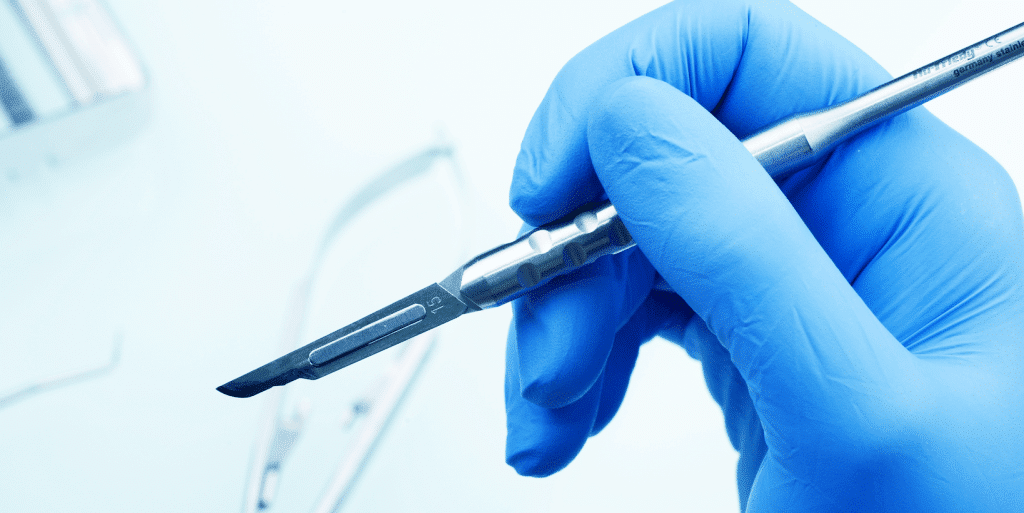What is a Probuphine Implant

Opioid addiction is a medical condition which the iatrical community now recognizes as a global epidemic. Addiction is one of the main determinants of the negative effects on neurobiological circuitry, and memory. When left untreated, this progressive disease can often lead to mental disabilities or even premature death.
Due to opioids influencing the brain’s reward system, addiction is accompanied by cravings, as well as a lack of impulse control. Probuphine implants have been designed as a promising part-treatment program, and this article will explore the topic, revealing some of the most important pieces of information patients should be aware of.
What Is A Probuphine Implant?
On account of abstinence being a treatment plan which is often proven unsuccessful, opioid addiction is dependent on a long-term regimen which should be guided under medical observation. In order to create the much-needed solution to this global epidemic, medical professionals have invested both their time, and billion dollars’ worth of research into inventing the Probuphine implant.
This is considered the first and only product available on the market which aims to help cure opioid addiction. It works by having the previously mentioned medicine –buprenorphine- run through the patient’s body, around the clock, for a period of six months.
Working as a subdermal implant that contains the medication buprenorphine, the implant resembles four matchstick-sized rods which are implanted into the patient’s upper arm. Although the procedure is relatively brief –around 15 minutes- the device lasts up to 6 months.
What Is A Probuphine Implant Used For?
Probuphine is designed to treat adults who have opioid cravings or are addicted to opioid drugs. The aim is to reduce cravings, and physical withdrawal symptoms by releasing buprenorphine, which targets the receptors that typically attract opioids. Although prescribed as part of a complete treatment which also includes counseling, and behavioral therapy, research has revealed that the treatment is effective in relieving symptoms such as nausea, insomnia, and irascibility experienced during early opioid withdrawal.
A secondary advantage to the subdermal implant is the patient’s improved compliance during the course of the treatment since it alleviates the pressure of having to remember to take a daily dosage of medicine. Although this option could be prescribed as an alternative, sublingual pills can be easily misplaced, forgotten, sold, or even stolen.
What Are The Side Effects Of A Probuphine Implant?
Any medication or medical procedure carries certain health risks, and using Probuphine is no exception. Drowsiness, dizziness, lightheadedness, constipation, or headaches are all symptoms that may occur. Whilst serious complications are less common, they can still affect a small percentage of patients.
In order to avoid and prevent constipation, medical professionals recommend eating a diet which is high in fiber, and subsequently drinking high amounts of water. Exercise is also advisable during the 6-month period; however, always consult with your doctor and pharmacist before starting a workout. If the above advice has not proved helpful, with the guidance of your doctor, you can use a laxative (such as a stimulant type with stool softener).
According to the implant’s informational site, insertion and removal of the implant runs the risk of implant migration, expulsion, protrusion, or even damaging the nerves as a result of the procedure. Case in point, migration can result in embolism, and premature death, provided that the device has not been inserted accurately.
Needless to say, Probuphine implants should only be inserted, and removed by a health care provider who has been previously trained and certified to perform the procedure – through a restricted program called the Probuphine Risk Evaluation and Mitigation Strategy (REMS) program. Otherwise, patients are at risk of developing infections which can spread to other bodily organs causing organ failure, and in some cases, even death.
Amongst other adverse reactions, patients should be mindful of:
Physical Dependence Or Opioid Withdrawal
Although this medication is used to prevent withdrawal reactions, it can, in some circumstances, cause narcotic withdrawal symptoms. Due to the recantation of the drug, and its subsequent reward-feelings, the mental capacity of certain patients can become reduced, resulting in negative changes (i.e anxiety, irritability, trouble sleeping, or other several mental or mood disorders).
Medical professionals should be informed if the Probuphine implant has been removed, or treatment has ceased, and the patient is experiencing symptoms of shaking, sweating, watery eyes, diarrhea, vomiting and/or muscle aches. Despite the fact that withdrawal is more common when a patient starts treatment, medical professionals should be advised of any changes which are out of the scope of the patient’s normal behavior.
Liver problems
Signs of liver problems may include your skin or sclera – the white part of your eyes – turning yellow (jaundice).
Allergic reactions
Itching, pain, or redness at the insertion/removal site may also occur. However, if you develop rashes, hives, constant itching, swelling of your face, wheezing, low blood pressure, dizziness or decrease in consciousness, immediately consult with your doctor, who will act accordingly.
Decrease in blood pressure
Dizziness is another common side effect which is usually made clear when patients sit up or lie down. Doctors have expressed increased concerns about patients neglecting their post-treatments plans, taking into account that the medication – buprenorphine – is viewed by patients as a six-month “cure”. Because probuphine is a part of the treatment, it should be made clear that regular check-ups, and counseling are essential to their ongoing recovery.
How Long Should You Keep The Implant?
The Probuphine implant is an FDA-approved treatment which has been on the market since May of 2016. Bearing in mind that the implant is only part of a complete opioid dependence treatment which includes counseling and psychosocial support, the regime should be viewed as a lifelong plan which combats opioid cravings.
However, the opioid partial agonist – the medicine called buprenorphine- is only released into the bloodstream for six months through a series of four, one-inch-long rods that are implanted under the skin in the upper arm. Research has revealed that roughly two-thirds of Probuphine-treated patients had no evidence of illicit opioid use throughout the six months of treatment. The results are similar to the number of patients who used the sublingual method (under the tongue).
Medications such as buprenorphine have revolutionized the treatment of opioid addiction, and other similar disorders. Due to the fact that Probuphine is able to control opioid cravings, and relieve some of the withdrawal symptoms associated with addiction, this six-month treatment enables patients to be in control of the regime, encouraging them to embrace healthier choices.
This is made possible because the medication gradually restores the brain circuits associated with decision-making, self-control, and the reward system. In other words, it is imperative for patients to adhere to a prescribed regimen which includes behavioral therapy and counseling, and to detect any potential side effects which pose a risk to their overall physical, and mental health.
If you would like to find out more about our Probuphine implant service then please contact one of our experts for free advice!


